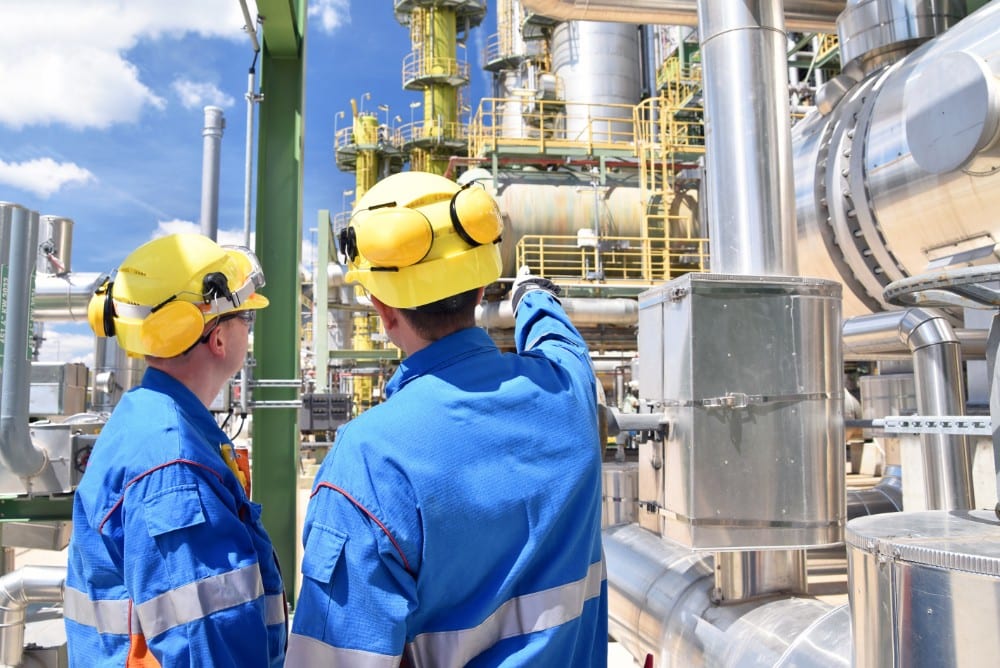Safer Alternatives to Traditional Industrial Tank Cleaning
When it comes to running a chemical plant, employee safety is the top priority. Unfortunately, there are necessary tasks that put employees in danger. The most dangerous of those is tank cleaning. Fortunately, there are viable options that keep employees safe. If you are still risking your employees by putting them inside of dangerous, confined spaces, it is time for you to look into alternative tank cleaning options.
Traditional Tank Cleaning Procedures & Drawbacks
The typical tank-cleaning procedure involves shutting down the plant and emptying the tanks. The tanks have to be emptied, degassed, and prepared for employees to enter them. Then, the employees have to be properly trained to safely clean the tank. It is not a simple process, and OSHA has strict regulations that plant managers must follow.
Then, employees are covered in safety gear as they risk their lives to clear the toxic sludge from the bottom of the tanks. Employees then have to squeeze through a small opening to spend time in a hazardous space.
This traditional procedure has proven to be costly, not just financially, but in resulting illnesses and injuries. It delays projects, as plants have to shut down to keep employees cleaning the tanks safer. The process also has the possibility of human errors, which leads to injuries and potentially death.
The confined space puts employees at risk, not just to falls and other physical injuries. But, the enclosed spaces mean that they are at risk of inhaling toxic fumes. The process is also expensive in payroll and lost revenue.
Are you still wasting time and money on conventional tank cleaning?
See how your plant could be running more efficiently with robotic tank cleaning. View
Cleaning Without Humans
Plant managers have alternatives to traditional industrial tank cleaning procedures. One is hydroblasting, and the other is robotics tank cleaning. Both keep humans outside of tanks, where they are safe.
Remote Hydroblasting
This technique takes most of the human element out of industrial tank cleaning. Instead, a system that functions like high-powered sprinklers clean the tanks. The hydroblasting tools enter through the take or the spray balls. Unfortunately, this solution has some drawbacks.
Ideally, remote hydroblasting (also known as tank circulating) is done with high-pressure water jets that remove sludge and residue. With this process, environmental-friendly water takes the place of chemical solutions.
Remote hydroblasting is a good solution for plants that have tanks that can be cleaned with rotary heads, spray balls, and jets that create a sheeting action on the tank walls and floors. It is an affordable way to scour the tanks in a 360-degree pattern in less than 30 minutes.
The downside of hydroblasting is the upfront installation costs. However, many plants find it to have a decent ROI, as it saves time and money in the long run by removing employees from the process. Hydroblasting is a good tool for easy cleaning but is not recommended for heavy-duty cleaning. The spray heads or spray balls are so high above the floor of the tanks that it can be difficult for them to clear away the toughest sludge and grime.
Another downside of hydroblasting is that employee injuries still occur. Faulty equipment or improper installation can cause injuries from the high-pressure jets and water. The common injuries from this problem are cuts and broken bones. Another issue that could arise are employees wearing the wrong safety gear, which can result in injuries from falls and debris entering the eyes.
Related Article: Robots vs. Humans: Which is Safer for Tank Cleaning?
Robotic Tank Cleaning 
The other option for employee-free industrial tank cleaning is using robots. Eco-robots are designed to do thorough tank cleaning without any humans having to enter the confined space. These tank-cleaning robots are controlled remotely by humans who stay safely outside at all times.
The robots enter the tank through the confined entrance and roll around on treads, like a tank. The robust robots decontaminate and remove the toxic waste from the floor of the tank. They do this using significantly less water and chemicals than humans do when cleaning tanks the traditional way.
The eco-robots are able to clean the tanks faster and more effectively than humans do. Another benefit of using eco-robots is that decontaminating them is faster than the process of sanitizing humans after they exit the confined spaces. All it takes to decontaminate the robots is to spray them with cleansers and let them dry.
When humans clean the tanks in the traditional way, they need to be decontaminated in their safety gear every time they leave the tanks. Considering that it can take hundreds of hours for humans to clean the tanks, employee decontamination is a significant part and expense of the process as humans need to leave the tanks after a few hours.
Tank cleaning robots offer plenty of benefits for plant managers. While the human-safety element is at the top of the list, another important benefit is increased productivity. When humans clean tanks, plants are shut down throughout the process. Eco-robots get the job done in a fraction of the time and at a much lower cost. The robots do not need to have lunch breaks or stop for restroom breaks. They can do their job in the dark and on the weekends, too.
Manual tank cleaning has been the norm for decades, but it no longer has to be. Instead, plant managers can turn to robotic and remote tank-cleaning methods that keep their employees safe from toxic chemicals and confined spaces. Changing the way that industrial tanks are cleaned increases employee safety and decreases plant shutdowns. With the availability of safe alternatives, there really isn’t a reason to have employees cleaning in hazardous spaces anymore.





